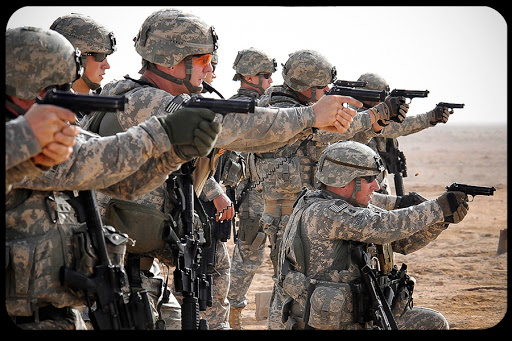Military Times, a Gannett Company publication has released its annual survey of active duty service members, and the news is not good. The report, written by Hope Hodge Seck and titled “America’s Military: A Force Adrift,” finds “morale indicators on the decline in nearly every aspect of military life. Troops report significantly lower overall job satisfaction, diminished respect for their superiors, and a declining interest in re-enlistment now compared to just five years ago.”
According to the non-scientific survey of Military Times readers, only 56% of service members believe “my quality of life is good or excellent,” down from 91% in 2009. Seventy percent believe that the quality of life for active-duty soldiers, sailors, airmen and marines will decline in the next few years.
Much of the current pessimism has to do with pay and benefits, which have taken a hit as the wars in Iraq and Afghanistan have wound down. Last year, Congress capped military pay increases at 1%, almost half the growth of private-sector wages. That’s the lowest military pay raise since the mid-1970s. Some small reductions were made in military housing benefits, as well, with troops having to foot the bill for 5% of their housing costs. That number will drop to 1% next year, but for service members who are already underpaid any marginal increase is a lot.
As the report notes, “a pervasive sense of pessimism about the post-9/11 wars may also contribute to the overall feeling of dissatisfaction among troops and a feeling of detachment from the decision-makers who sent them to those fights.” Only 27% agreed that the “senior military leadership has my best interests at heart,” as compared to 53% five years ago. In 2009, 78% of troops felt that the quality of the officer corps was good or excellent. That number is down to 49% now.
Troops also feel disconnected from civilians, especially now that the war in Iraq is over and the war in Afghanistan is winding down. The report cites Duke University’s Peter Feaver, a professor of political science, who notes that, "for the civilian world, it might have been easier to psychologically move on and say, ‘Well, we are cutting our losses.’ But the military feels very differently. Those losses have names and faces attached to [them]."
Morale is also affected by reductions in force (RIF), which often catch service members by surprise and scuttle plans to make the military a career. RIFs are nothing new, of course; every army that has ever fought retired a good portion of its soldiers following the cessation of hostilities. But budget-driven downsizing at a time when many Americans continue to face economic insecurity can affect both those cut from the rolls and those threatened by cuts, especially close colleagues.
Then there is the stress of repeated deployments. An estimated 10 percent of the 2.4 million service members who have served in Iraq and Afghanistan have deployed three times or more. These deployments put enormous pressure on soldiers and sailors, but also on families. Military wives whose husbands are subject to multiple long deployments suffer from higher rates of depression, and such couples face a much higher risk of divorce than other military or civilian couples.
Given this dramatic decline in the morale of the armed forces, it is perhaps no accident that suicide is now the leading cause of death among active duty personnel, exceeding both accidents and combat. Currently, one active-duty service member a day commits suicide, and when that lens is widened to include all veterans, both active and separated, the daily figure swells to 22 per day.
And as noted here last May, the rates are positively frightening. Young veterans in the highest risk category – 18 to 24 years of age – have a rate of 79.1 out of 1,000. The civilian rate for the same age group is 25 out of 1,000. Older veterans are less likely to commit suicide, but even their numbers far outstrip their civilian counterparts by 2 to 1, and there are now millions more American veterans than there were at the turn of the 21st Century.
During 13 years of war, 6,800 American service men and women lost their lives and over 52,000 were wounded in action. And that doesn’t count the hundreds of thousands who came back suffering from a variety of other maladies, both physical and psychological. Those who served accounted for less than 1% of the American population, the vast majority of whom never engaged in the struggle except to offer rote “thank you’s” upon their return.
And now we’re ramping up for more war, with another open-ended timetable, against a foe of our own creation, one that will be difficult if not impossible to defeat with conventional tactics, egged on by people who will once again evade war’s consequences. Despite all the assurances about “no boots on the ground,” soldiers and marines know that they’ll be in the fight eventually. They wonder about the mission, whether their lives will be risked for something less than the defense of the United States. They worry about their families and their futures, and with good reason.
Mark Gordonis a partner at PathTree, a consulting firm focused on organizational resilience and strategy. He also serves as president of both the Society of St. Vincent de Paul, Diocese of Providence, and a local homeless shelter and soup kitchen. Mark is the author of Forty Days, Forty Graces: Essays By a Grateful Pilgrim. He and his wife Camila have been married for 31 years and they have two adult children.

